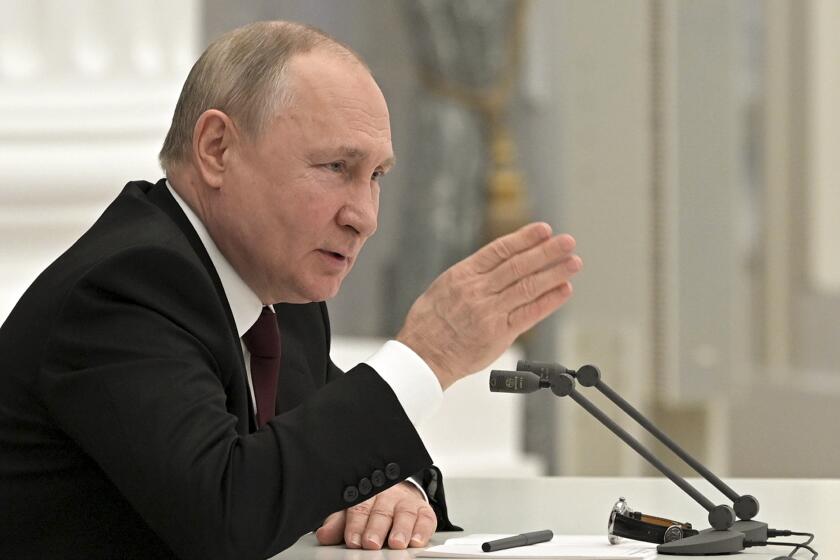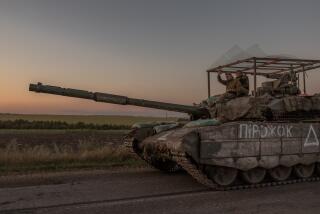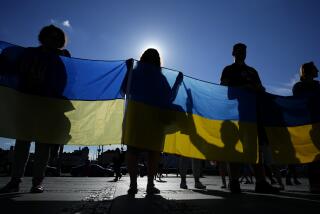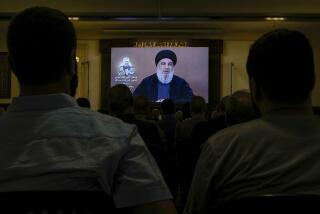News Analysis: Does the crisis in Ukraine foreshadow a broader war?
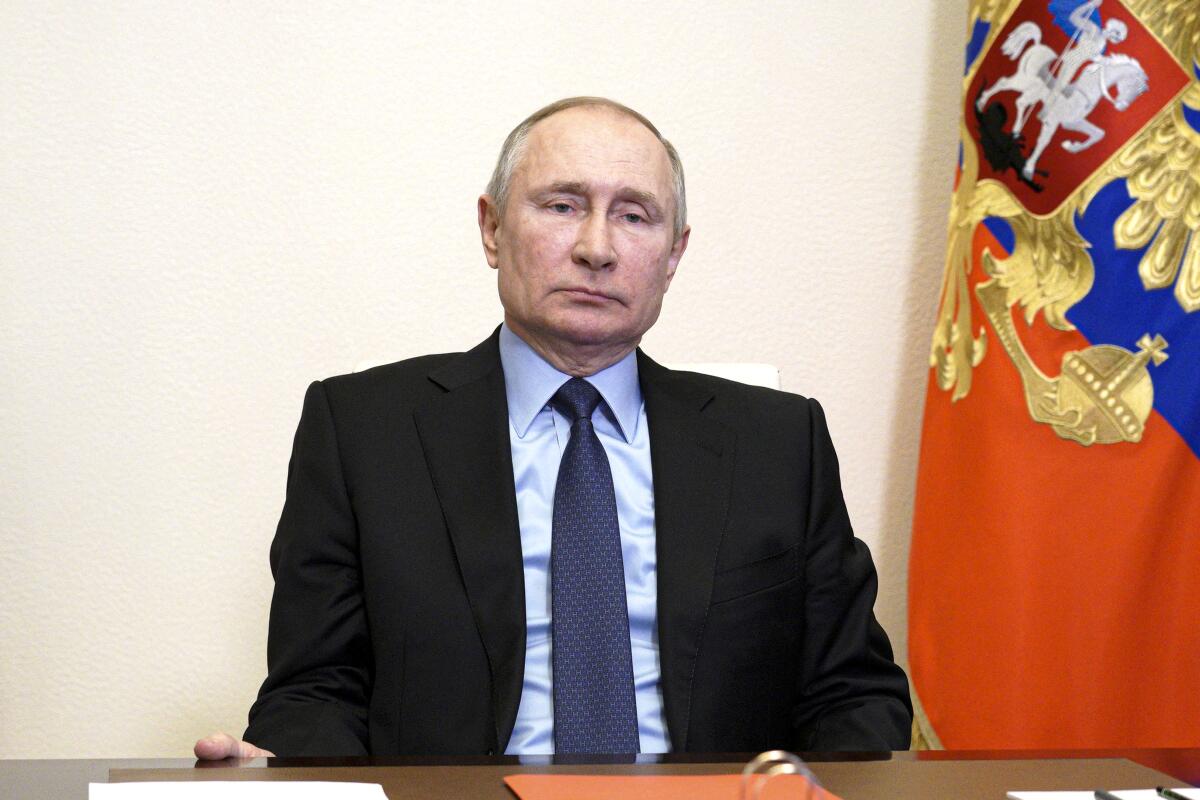
- Share via
WASHINGTON — The sights and sounds coming from Ukraine — the screams of air raid sirens, explosions, the rumbling of armored personnel carriers down rural roads — all happening in the middle of Europe inevitably conjure memories of World War II.
But do they also foreshadow a broader war that will consume scores of countries?
World War II, a savage conflict fought across the globe from 1939 to 1945, gave birth to NATO, a transatlantic alliance of the U.S. and major Western European nations. The alliance, formed in 1949, has preserved peace and stability in the region, more or less, for the last seven decades.
Challenge to NATO
Russia’s war on Ukraine, launched last week, poses the biggest threat to NATO in recent history.
Ukraine is not a member of the North Atlantic Treaty Organization, although it has expressed a desire to join. Before he started his invasion, Russian President Vladimir Putin had demanded that the alliance agree to never admit Ukraine.
The U.S. and its NATO allies rebuffed the demand, saying it was up to individual nations to decide whether they wanted to become members. It was NATO’s expansion to include other former Soviet republics that has most angered Putin and raised alarms in the Kremlin about Russia’s security.
Russian President Putin seems willing to sacrifice so much to occupy Ukraine. It is part of his attempt to rebuild a Russian empire loyal, essentially, to him.
Broader war unlikely
Although leaders of NATO countries have sought to sanction Putin and Russia over the invasion and have offered military assistance to Ukraine, President Biden has repeatedly emphasized that U.S. forces would not be deployed in Ukraine.
“Our forces are not and will not be engaged in the conflict with Russia in Ukraine,” Biden said Thursday at the White House.
Analysts and historians say the likelihood of U.S. forces engaging in combat with Russians is extremely low. That is because leaders of both countries understand the stakes involved in such a battle. Russia and the U.S. have robust nuclear arsenals, and their leaders realize any miscalculation could quickly spiral out of control, with dire consequences for their populations and humanity.
“I cannot imagine any scenarios where we get into a war with Russia that are not fanciful, random, irresponsible speculation,” said Simon Miles, a Cold War expert and assistant professor at Duke University. “You couldn’t put that toothpaste back in the tube. It would just have devastating consequences, such a conflict.”
Article 5
The only way analysts can foresee a war between the U.S. and Russia would be if Putin’s forces attacked a NATO country. That could trigger Article 5 of the North Atlantic Treaty, which stipulates an attack on one member is an attack on all. That would mean committing troops to combat to help another NATO member. It has been invoked just one time — after the Sept. 11, 2001, terrorist attacks on New York and the Pentagon.
For weeks, top U.S. and European officials have reaffirmed their commitment to Article 5, a signal to Moscow that attacking Ukraine is a much different proposition than trying to invade a NATO country.
“Let me be clear: America’s commitment to Article 5 is ironclad,” Vice President Kamala Harris said last week before the invasion. On Thursday, Biden issued the same pledge: “There is no doubt — no doubt that the United States and every NATO ally will meet our Article 5 commitments, which says that an attack on one is an attack on all.”
Experts say that Putin and Russian leaders surely got that message. He knows that if he orders an attack on a former Soviet satellite now in NATO (think: Romania and Poland), he would be inviting serious retaliation.
What about errant missiles, miscalculations?
Even so, analysts say, there are concerns about what might happen if an errant Russian airstrike or missile hits a NATO country, where the U.S. and its allies have been building up their forces in response to the Ukrainian invasion. They say such an incident could lead that nation to invoke Article 5.
“Any move against a NATO country now will bring a far wider and more dangerous war,” said Daniel Serwer, a conflict management expert at the School of Advanced International Studies at Johns Hopkins University in Washington. “NATO has beefed up its forces on Russia’s periphery, the opposite of what Putin wanted.”
Foreign policy experts noted that Putin may also not be as careful as U.S. leaders. He could feel emboldened by his foray into Ukraine and attack vulnerable European countries that are not NATO members, which could put his forces in closer proximity to NATO’s.
The Russian autocrat has complained about the small Baltic states joining the alliance, complicating his country’s access to the strategically important Baltic Sea. He might be tempted to invade those countries, believing NATO’s other countries would not be willing to commit forces to defend them. Although U.S. intelligence assessments of Putin’s intentions in Ukraine were largely accurate, they have frequently failed to divine his motivations and anticipate his actions.
“It all depends on how far Putin is willing to go,” said Eddy Acevedo, a former official with the U.S. Agency for International Development who is now a senior foreign policy advisor to the Wilson Center, a nonpartisan think tank in Washington. “So far, in predicting that, everyone has been off.”
Times staff writer Del Quentin Wilber contributed to this report.
More to Read
Sign up for Essential California
The most important California stories and recommendations in your inbox every morning.
You may occasionally receive promotional content from the Los Angeles Times.
